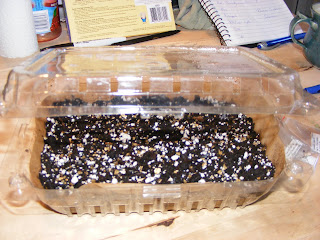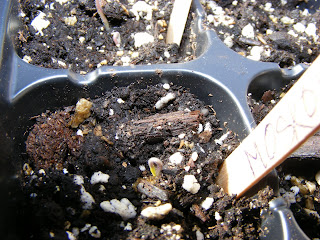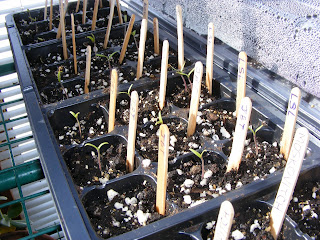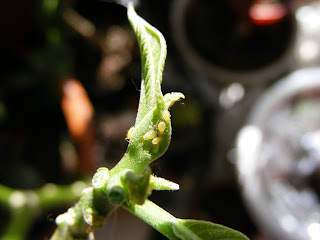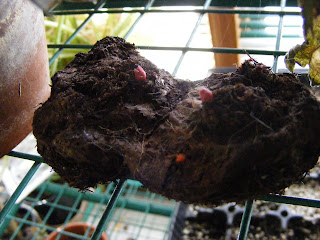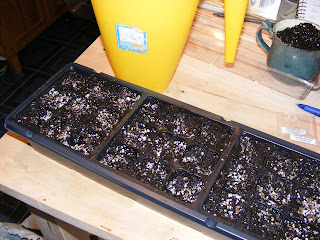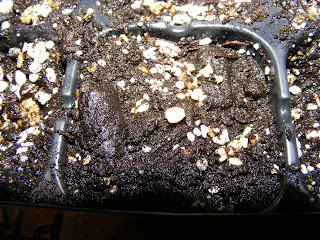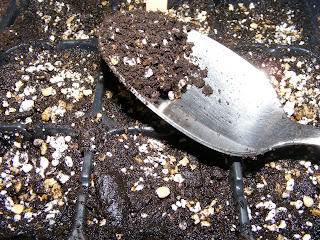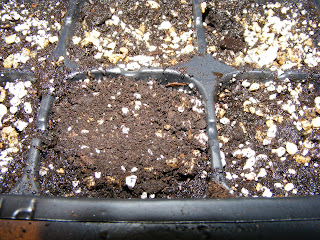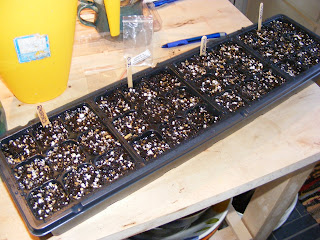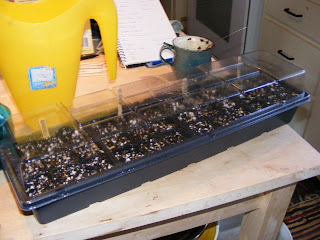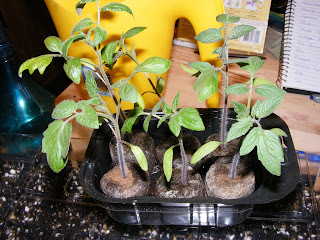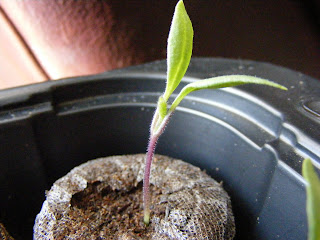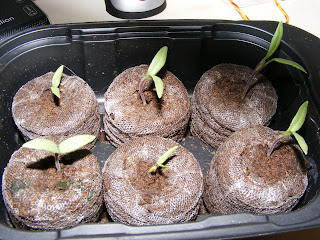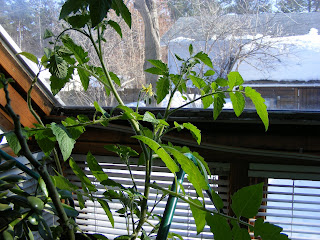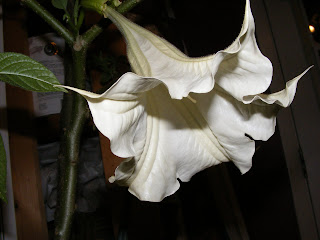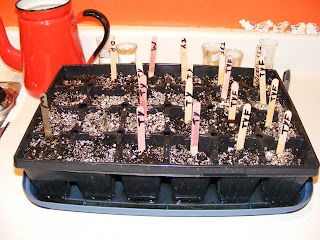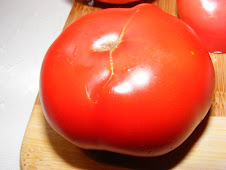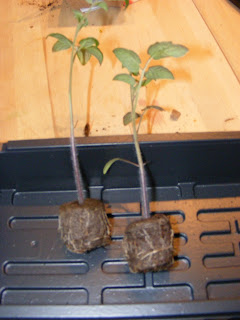
I have some Santalina F2's from the grocery store (don't ask - an experiment) that I've been growing for about a month or so, high up on a shelf in my south facing window, who were definitely on the waiting list for a transplant. I am a bit quicker than the health care system apparently! In this picture, you can see the roots growing out of the peat pellets I grew them in. I don't usually use peat pellets, I use the cell trays and soil, but these were cute little six pellet domed greenhouse trays, for a buck. I couldn't resist, and I have to say, I rather liked them. They worked well, and the plants certainly didn't complain. All six seeds germinated, and grew into fairly sturdy little plants in almost no time. I think I'll be on the look out for more peat pellets at garage sales and such this summer. They are a bit pricey when you buy them at Canadian Tire, or gardening supply stores.
For potting them up into bigger pots, I removed the cotyledons and placed the whole pellet at the very bottom of the pot. Then I simply filled it up with my soil, watered it, added a little more soil to the top. With peat pots, it's actually a good idea to remove as much of the pot as you can, because they just don't break down fast enough, and I also find they tend to dry out very quickly, but with the pellets, I don't see any problems just potting them right up. The roots have obviously worked their way through the mesh that holds the pellet together. Tomatoes will grow additional roots along the stem that is buried, so the theory is that this will actually give you a stronger root system. When you are planting them out in the garden, planting deep or trenching will do the same thing. The only concern when deep planting outdoors is that the soil need to be warmed up enough, as tomatoes do not like the cold. Trenching works by digging a shallow trench, and planting on a slant in the warmer top soil. It doesn't take tomatoes long to straighten out as they reach for the sun.
When transplanting from the cell, you need to be slightly gentler, as you don't want to disturb the root system too much when you are removing the tomato. I kind of squeeze it out from the bottom by pushing it upwards, trying to avoid handling the stem too much because it is very easily damaged, and then plant it basically the same way as I do with the pelleted tomato. Depending upon how long they will be in the new pot (usually they are only moved up to a 4 inch pot), I may give them a bit of fertilizer a week or so after transplanting. If I am potting them up for sale, then I may pot them up once more, in a slightly bigger one, in a few weeks, or if I am going to be growing in containers, I will generally pot those ones up to a bigger pot as well, before they go into the final big pot. Fish emulsion is a great organic fertilizer, I use one called Muskie, that I found at Canadian Tire, on sale at half price.


